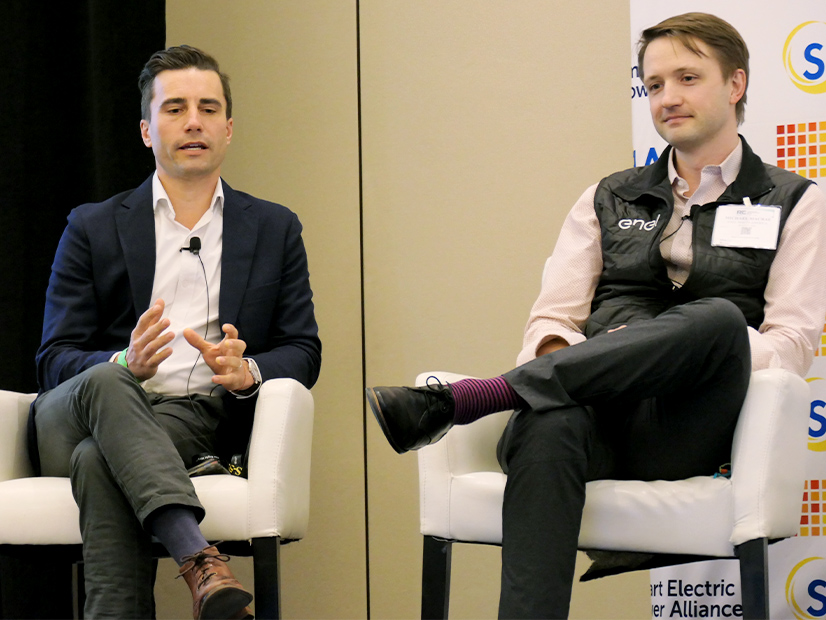
Distributed generation advocates and developers are frustrated with ISO-NE’s plan for complying with FERC Order 2222, but they say there are big prospects for improvement in a process that’s only halfway done.
The grid operator’s compliance filing, submitted to FERC earlier this month (on the fitting date of 2/2/22), would create new market participation models aimed at meeting federal regulators’ mandate to allow aggregated distributed energy resources to take part in its wholesale markets. (See NEPOOL PC Approves Tariff Changes for Aggregated DERs).
Industry representatives, speaking at the RE+ Northeast conference this week, said it simply fails to meet that goal.
“For front-of-the-meter DERs, I think ISO’s proposal has some benefits. For behind-the-meter DERs, it’s problematic. We don’t really think it accomplishes a whole lot, unfortunately,” said Nancy Chafetz, senior director of regulatory and government affairs at CPower Energy Management.
The proposal doesn’t allow resources behind a customer’s meter to participate directly in the market unless they have sign off from distribution utilities, which are unlikely to give the OK in the near term, Chafetz said.
Activating behind-the-meter DERs in the market could be valuable because there are whole fleets of them, including batteries, electric vehicles, hot water heaters and other devices in customers’ homes ready and waiting to be deployed to help stabilize the grid.
“If you’re a grid operator, emergencies don’t only happen between 4 p.m. and 8 p.m. every day on a weekday,” said Michael Macrae, senior director of regulatory affairs for ENEL North America. “Sometimes they happen at 10 in the morning on a Tuesday. And there’s no way to call all the [DERs] and say, ‘The person who uses you would be totally clueless if you just stopped for an hour.’”
The ISO-NE filing fails to capture that flexibility, he said.
“We would love to have all these resources be available for ISO dispatch and earn capacity market revenues for providing that service,” Macrae said.
Still Time on the Clock
The good news, say advocates, is that ISO-NE’s filing to FERC — and its counterparts from other regions — were just part of the conversation and not the end of it.
“Even though we were disappointed in all of the compliance filings that came in, I think we need to acknowledge that this is an ongoing conversation that will need to be iterative even after FERC rules,” said Chris Rauscher, senior director of market development and policy at Sunrun.
For example, there are rules outside of 2222’s scope that would prevent some resources from bidding into the market, like PJM’s must-offer rule, which requires resources participating in the capacity market to also bid into the energy market.
Advanced Energy Economy has been one of the most vocal critics of ISO-NE’s 2222 filing and is expected to protest it at FERC.
The trade group’s managing director Jeff Dennis said this week that commission staff have been asking detailed questions about previous filings from California and New York.
“That said to me that the commission is digging in and looking very carefully at these compliance filings,” he said.
Potential for a ‘Beautiful Symphony’
Despite their worries about the regulatory process, industry advocates see a bright future for DERs on the horizon.
“Bringing all of these DERs in aggregation to respond to wholesale markets, in my mind, is the biggest opportunity I’ve ever seen in my career for unlocking flexibility on the demand side,” Dennis said.
He gave the example of school bus electrification, which could produce “incredible” resources for flexibility.
“In five years, if FERC and the markets get it right, it will be a beautiful symphony every day,” Rauscher said.
